 Produced in the wake of Star Wars mania, Meco Menardo’s disco cover of John Williams’ music from Star Wars tops the Billboard Hot 100 chart for two weeks. A shortened, radio-friendly single is the song certified as #1, although the album version (titled Star Wars and Other Galactic Funk) is an extended suite lasting over 15 minutes and covering most of the movie’s major music themes. Meco would continue to ride the Star Wars train, disco-style, for years to come.
Produced in the wake of Star Wars mania, Meco Menardo’s disco cover of John Williams’ music from Star Wars tops the Billboard Hot 100 chart for two weeks. A shortened, radio-friendly single is the song certified as #1, although the album version (titled Star Wars and Other Galactic Funk) is an extended suite lasting over 15 minutes and covering most of the movie’s major music themes. Meco would continue to ride the Star Wars train, disco-style, for years to come. ![]()

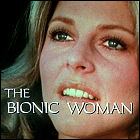 The 40th episode of The Bionic Woman, starring Lindsay Wagner and Richard Anderson, airs on NBC. James Olson (The Andromeda Strain) and Melinda Fee (The Invisible Man) guest star.
The 40th episode of The Bionic Woman, starring Lindsay Wagner and Richard Anderson, airs on NBC. James Olson (The Andromeda Strain) and Melinda Fee (The Invisible Man) guest star. The
The 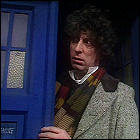 The
The 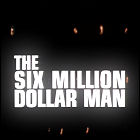 The 83rd episode of The Six Million Dollar Man is broadcast on ABC, starring Lee Majors and Richard Anderson. Jenny Agutter (Logan’s Run) guest stars.
The 83rd episode of The Six Million Dollar Man is broadcast on ABC, starring Lee Majors and Richard Anderson. Jenny Agutter (Logan’s Run) guest stars.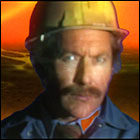 ITV airs the
ITV airs the 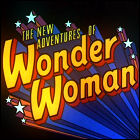 The 17th episode of Wonder Woman airs on CBS, starring Lynda Carter and Lyle Waggoner.
The 17th episode of Wonder Woman airs on CBS, starring Lynda Carter and Lyle Waggoner.  The
The 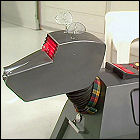 The
The 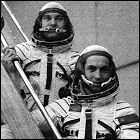 The Soviet Union launches Soyuz 25 into Earth orbit, with cosmonauts Vladimir Kovalyonok and Valery Ryumin set to become the first occupants of the new Salyut 6 space station. However, the crew is unable to successfully dock Soyuz 25 to Salyut 6, and after a fifth attempt to dock, the mission is aborted and the cosmonauts are recalled to Earth due to concerns about the remaining fuel in their vehicle. As a result, Soyuz 25 is the last all-rookie Soviet space crew until the 1990s.
The Soviet Union launches Soyuz 25 into Earth orbit, with cosmonauts Vladimir Kovalyonok and Valery Ryumin set to become the first occupants of the new Salyut 6 space station. However, the crew is unable to successfully dock Soyuz 25 to Salyut 6, and after a fifth attempt to dock, the mission is aborted and the cosmonauts are recalled to Earth due to concerns about the remaining fuel in their vehicle. As a result, Soyuz 25 is the last all-rookie Soviet space crew until the 1990s.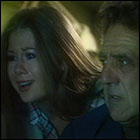 ITV airs the
ITV airs the 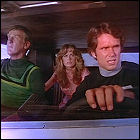 CBS airs the
CBS airs the 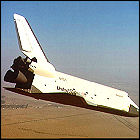 Space Shuttle Enterprise makes its fourth free-flight after separating from its modified Boeing 747 carrier aircraft, gliding to a safe landing at Edwards Air Force Base’s dry lake bed runway. For the first time, Enterprise’s engines are left exposed, adding to the drag experienced by the gliding shuttle rather than masking the engines with a protective cover. This more accurately simulates the aerodynamics of a shuttle returning from space. Enterprise’s crew for the two-and-a-half-minute flight consists of Joe Engle and Richard Truly.
Space Shuttle Enterprise makes its fourth free-flight after separating from its modified Boeing 747 carrier aircraft, gliding to a safe landing at Edwards Air Force Base’s dry lake bed runway. For the first time, Enterprise’s engines are left exposed, adding to the drag experienced by the gliding shuttle rather than masking the engines with a protective cover. This more accurately simulates the aerodynamics of a shuttle returning from space. Enterprise’s crew for the two-and-a-half-minute flight consists of Joe Engle and Richard Truly. The
The 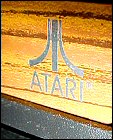 The
The 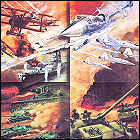 Atari releases
Atari releases  The
The 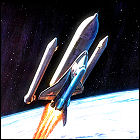 NASA prepares a preliminary schedule of Space Shuttle launches, covering the years 1979-1982 (and assuming the shuttle will be ready to launch in 1979). The ambitious schedule (which also assumes, in line with current planning, that the test orbiter Enterprise will be upgraded to spaceworthiness) includes almost-monthly flights from 1979 onward to deploy communications and weather satellites already on the drawing board, as well as frequent science missions with the cargo-bay-mounted Spacelab. On only the second test flight, the schedule has OV-102 (yet to be named Columbia) slated for a mission to the abandoned early 1970s space station Skylab, using a teleoperator retrieval system which also exists only on paper. While many of the schedule’s goals will be met, the delay in the shuttle program will be longer than NASA anticipates at this time.
NASA prepares a preliminary schedule of Space Shuttle launches, covering the years 1979-1982 (and assuming the shuttle will be ready to launch in 1979). The ambitious schedule (which also assumes, in line with current planning, that the test orbiter Enterprise will be upgraded to spaceworthiness) includes almost-monthly flights from 1979 onward to deploy communications and weather satellites already on the drawing board, as well as frequent science missions with the cargo-bay-mounted Spacelab. On only the second test flight, the schedule has OV-102 (yet to be named Columbia) slated for a mission to the abandoned early 1970s space station Skylab, using a teleoperator retrieval system which also exists only on paper. While many of the schedule’s goals will be met, the delay in the shuttle program will be longer than NASA anticipates at this time.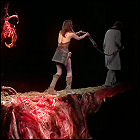 The
The  ITV airs the
ITV airs the 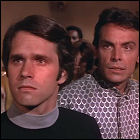 CBS airs the
CBS airs the 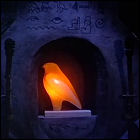 The
The 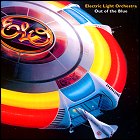 Electric Light Orchestra‘s seventh album,
Electric Light Orchestra‘s seventh album,  NASA’s Viking 2 orbiter closes to within 40 miles of Mars’ small outermost moon, Deimos, the first spacecraft to visit the tiny moon up close. Deimos is found to be cratered and irregularly shaped, confirming the likelihood that it is an asteroid that once strayed close enough to Mars to fall into orbit.
NASA’s Viking 2 orbiter closes to within 40 miles of Mars’ small outermost moon, Deimos, the first spacecraft to visit the tiny moon up close. Deimos is found to be cratered and irregularly shaped, confirming the likelihood that it is an asteroid that once strayed close enough to Mars to fall into orbit. NASA announces that Voyagers 1 and 2 may be in a unique position to study the newly-discovered Comet Kohler 1977 XIV, discovered just days before Voyager 1’s launch. Both Voyagers are expected to pass Comet Kohler at a distance of a little over 1 astronomical unit (AU), equivalent to the distance between Earth and the Sun, in November, and the possibility of examining the comet with their onboard instruments is proposed. This plan is eventually abandoned, since the comet will track near the sun, direct exposure to which could harm the television tube cameras installed aboard each Voyager. The exploration of comets with robotic spacecraft will have to wait until the 1980s.
NASA announces that Voyagers 1 and 2 may be in a unique position to study the newly-discovered Comet Kohler 1977 XIV, discovered just days before Voyager 1’s launch. Both Voyagers are expected to pass Comet Kohler at a distance of a little over 1 astronomical unit (AU), equivalent to the distance between Earth and the Sun, in November, and the possibility of examining the comet with their onboard instruments is proposed. This plan is eventually abandoned, since the comet will track near the sun, direct exposure to which could harm the television tube cameras installed aboard each Voyager. The exploration of comets with robotic spacecraft will have to wait until the 1980s.